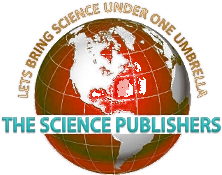
Veterinaria ISSN 2409-4676
2015 | Volume 3 | Issue 2 | Pages 14-20

Copyright © 2013-2017
The Science Publishers. All Rights Reserved.
Review article
MicroRNAs: History, Biogenesis and Modes of Action to Regulate Gene Expression
Aayesha Riaz a*, Robert G Dalziel b, Virginia M. Venturina c, Muhammad Ali Shah a
a Department of Pathobiology, Faculty of Veterinary and Animal Sciences, PMAS-Arid Agriculture University, Rawalpindi, Pakistan.
b Centre for Infectious Diseases and The Roslin Institute, University of Edinburgh, UK.
c Pathobiology Department, College of Veterinary Science and Medicine, Central Luzon State University
Abstract
MicroRNAs (miRNAs) are short, non-coding RNAs that regulate post-transcriptional gene expression in animals and plants. Biogenesis of miRNAs is itself a highly complex process. miRNAs bind to the 3' untranslated region (UTR), 5' UTR or/and coding regions of their target mRNAs in a sequence specific manner. Targeting of mRNAs leads to the repression of protein synthesis by a mechanism that is yet to be fully determined. miRNA-mediated translational repression has been proposed to occur in distinct ways. Some reports have also shown miRNA-mediated translational activation. Details regarding the different modes of actions related to transcriptional and post-transcriptional regulation of miRNAs are still emerging. In this review, information regarding the history, biogenesis and different modes of actions of miRNAs are discussed.
Keywords: MicroRNAs, biogenesis, translational repression, translational activation, 3’UTR, AGO.
Received: 25 august, 2015 Revised: 19 September 2015 Accepted: 25 September, 2015
*Corresponding author: Aayesha Riaz Email: aayeshariaz@uaar.edu.pk






